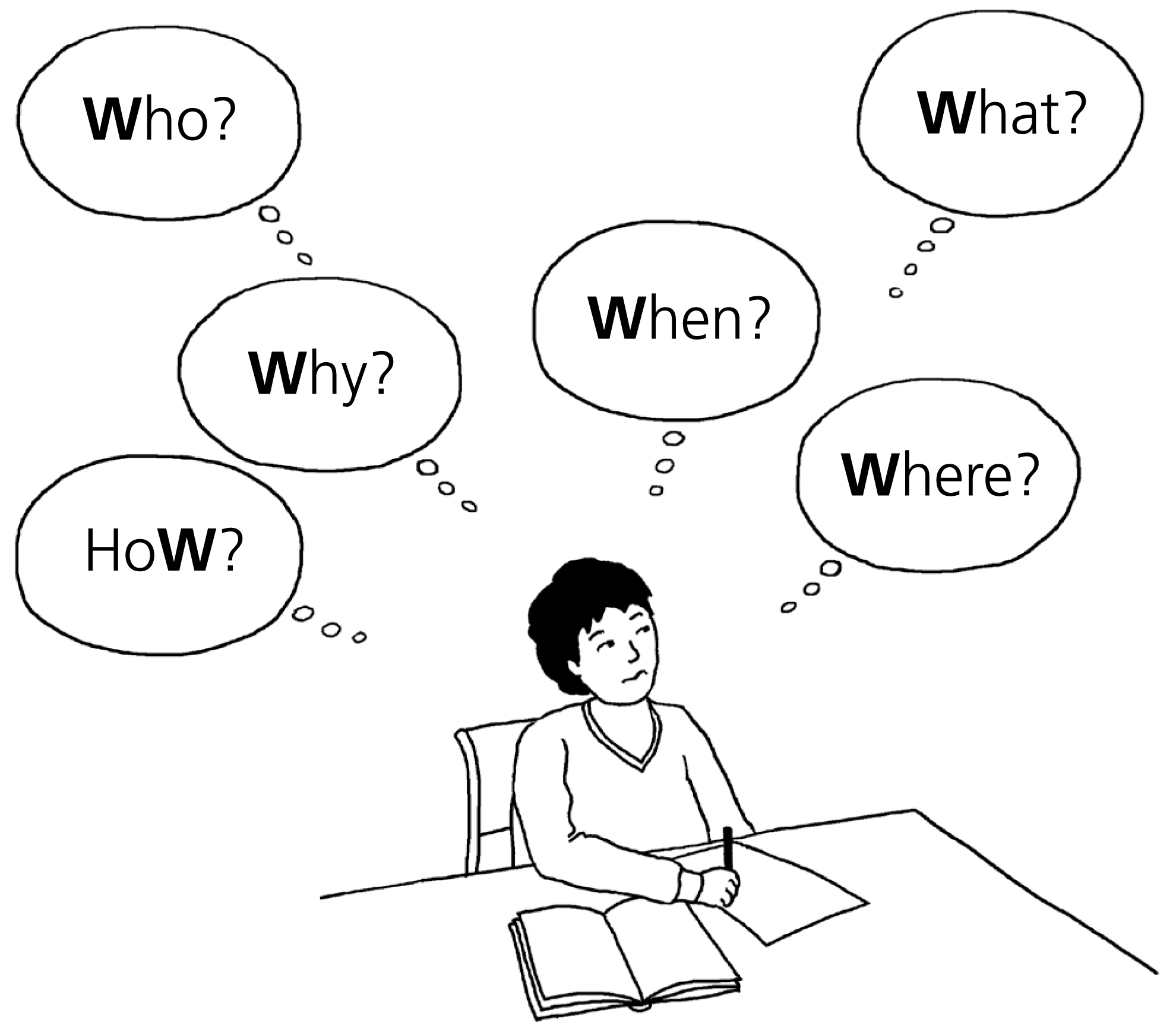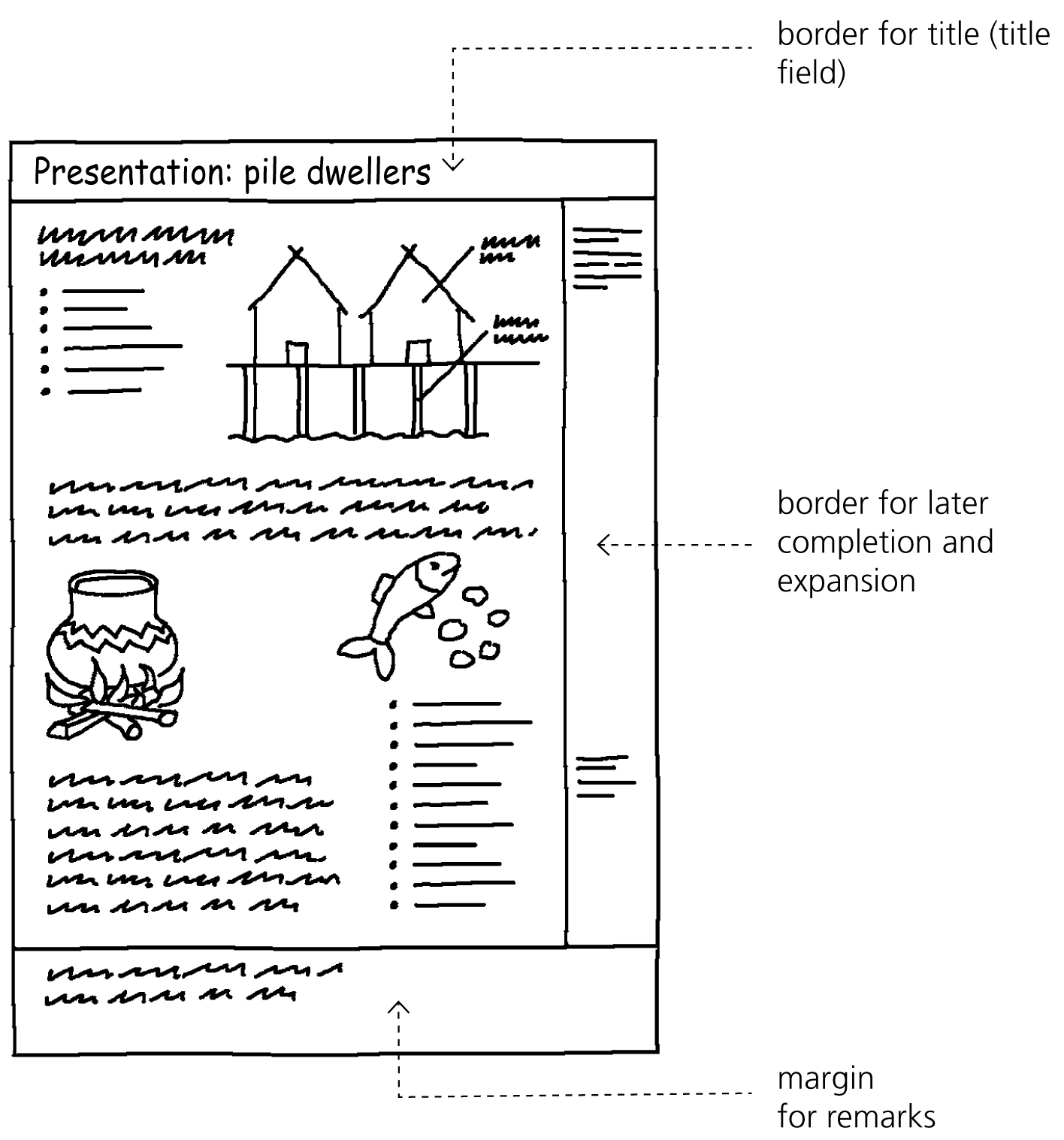10.1
The W-question tip
If you answer the following questions (with 2–3 sentences each), you get a usable summary:
- Who are the most important persons?
- What happened, what is the plot?
- When did the action occur?
- Where did the action take place?
- Why did it happen?
- How did it happen?

10.2
Tips for summarizing books and stories:
- First, write down the following information: title of the text or story – author – publisher – number of pages – type of book (non-fiction, detective story, comic strip…).
- Write a very short summary (three to five lines).
- Briefly summarize the entire book or story, chapter by chapter (or part by part), limiting yourself to the most essential aspects.
- At the end, indicate why you liked the book or the story.
10.3
A good scheme for summaries
- Take an A-4 paper and divide it with a ruler into approximate parts as below:
- Leave a top margin of about 2 cm for the title.
- In the right hand margin, leave a space of about 4 cm for later completion and expansion with keywords, etc.
- At the bottom, leave a margin of 4 cm for personal remarks, questions, etc.
- In the title field, enter what you summarized. Example: “Presentation about the Roman period“.
example of a well-structured summary:

- In the large field, summarize the text (or the texts) you read about your topic. Only list the most important information. Write only keywords or short sentences. Use abbreviations. Subdivide your text into sections.
- Read and supplement your summary. In the right hand margin, write the most important keywords to each section of your text. At the bottom, write your personal observations and questions that you still need to clarify.
Re-read everything one more time in order to remember and memorize it well.






